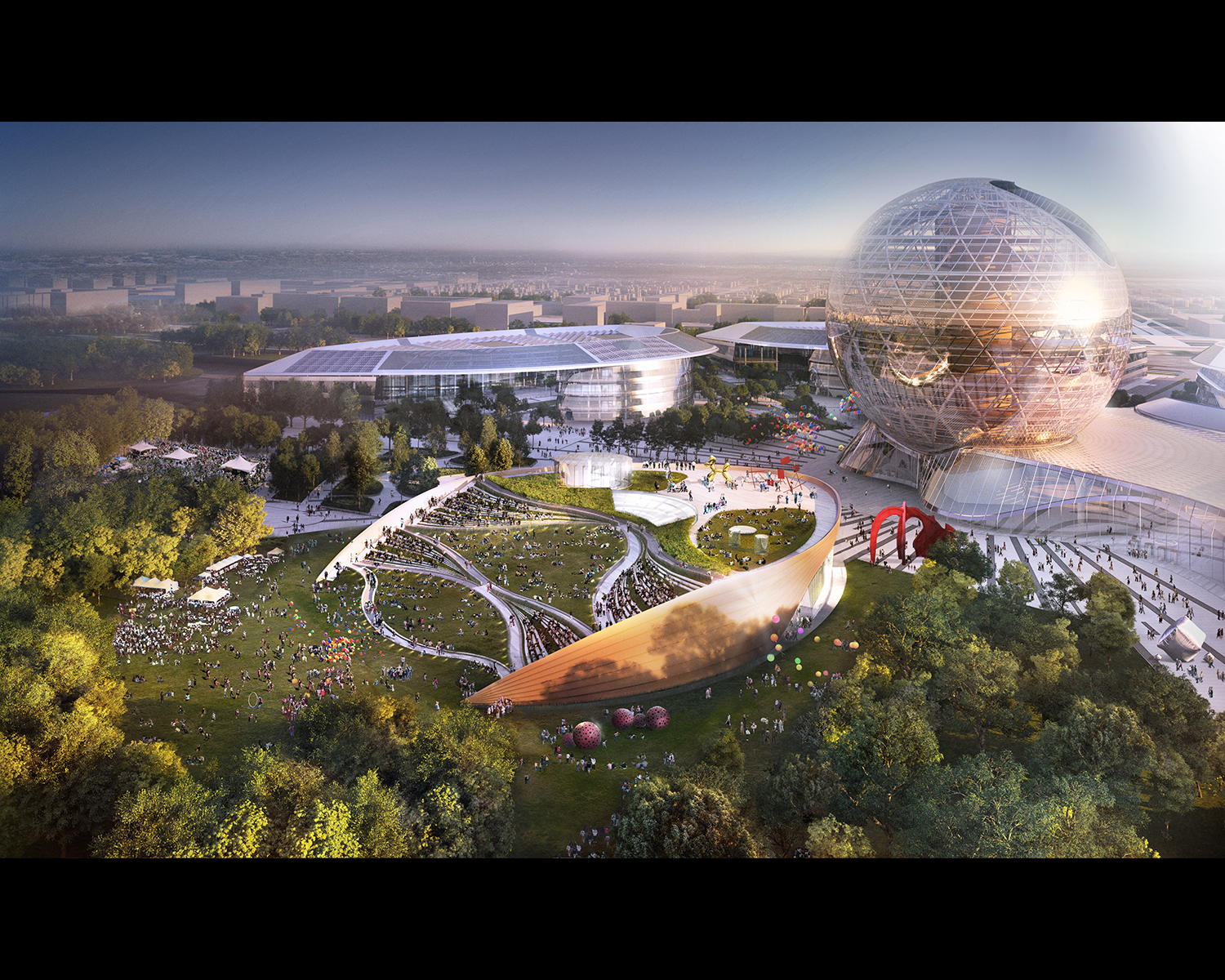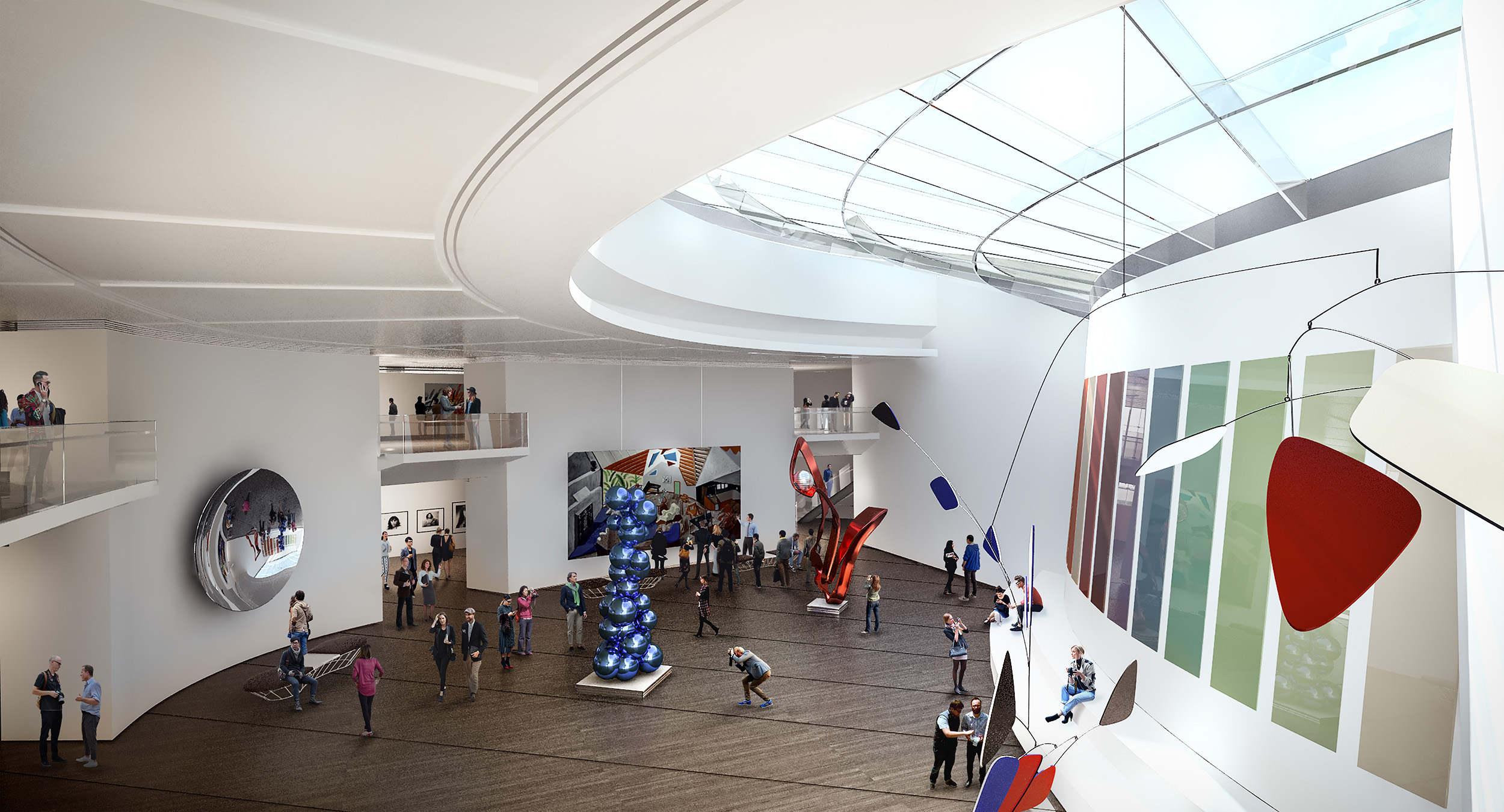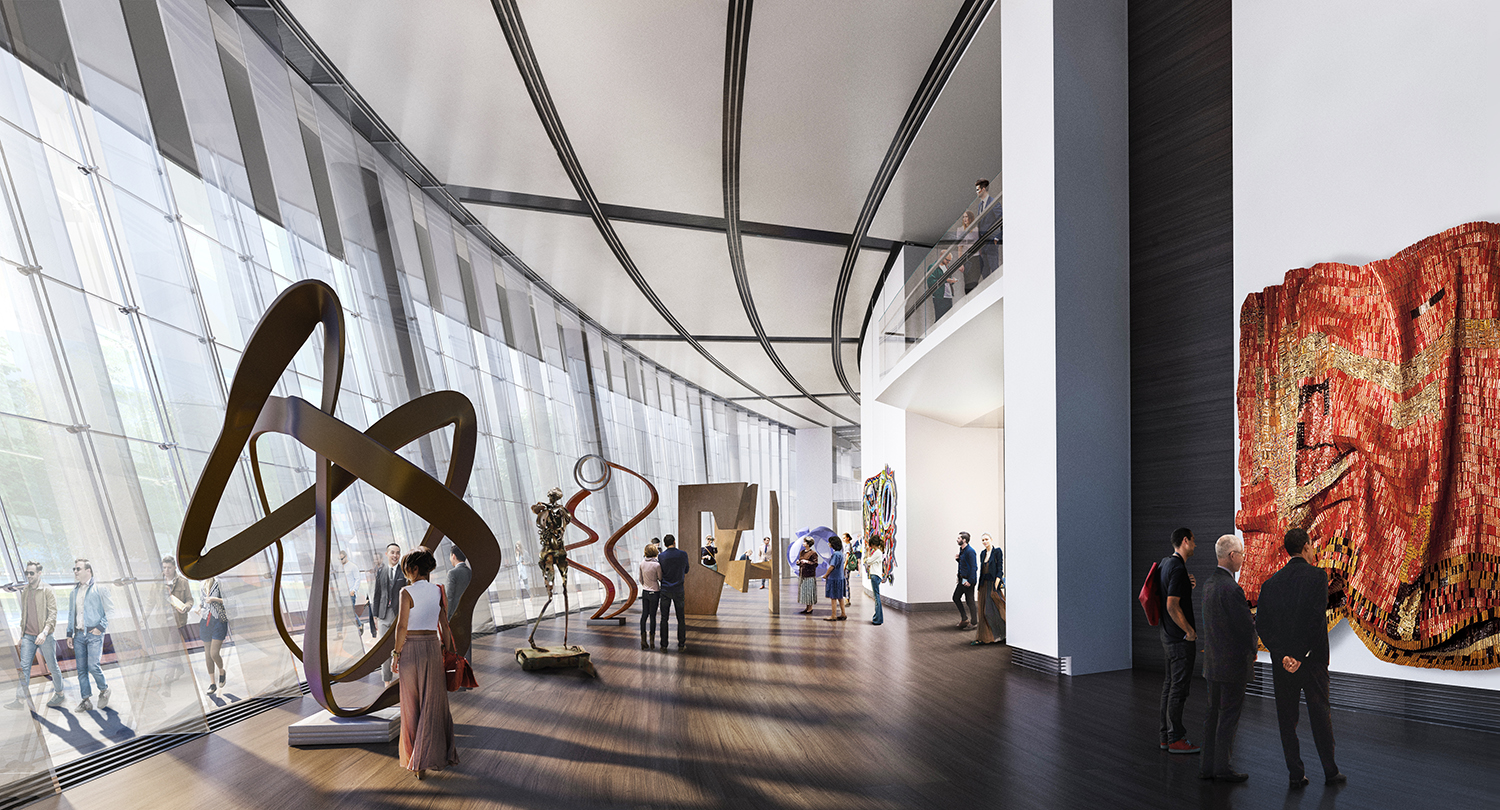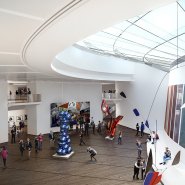Astana Art Center
The Astana Art Center was designed to be a flexible, multipurpose exhibition space that will receive 1000 people per hour when the International Exposition opens in Astana in June 2017. The Art Center, now under construction in Astana, Kazakhstan, has an area of approximate 4,660 sm.
The building’s design offers the public many opportunities to appreciate art from a variety of levels of accessibility, perspectives, and spaces. At the ground level, the building invites visitors to enter though a main gallery. This intermediate area was designed as a processional viewing space that links the public realm with the interior galleries.
The interior spaces were designed to hold two different scales of art: two sizable gallery spaces will stage large scale contemporary art up to 8 meters in height, while a two story arcade, located between the two galleries, was designed to exhibit two-dimensional art and smaller-scale pieces. An outdoor sculpture park surrounds the gallery spaces with a series ramps and stairs that urges visitors to interact with the art and architecture and see the sculptures from different views.
The park moves around the building and up onto the roof, organically integrating into the surrounding landscaping. In doing so, and because of its slope, it becomes a natural amphitheater with the ability to hold public events for up to 7000 people. And because of its positioning within the exposition site, this outdoor space also encourages visitors to experience the other cultural buildings, like the Kazakhstan Pavilion, which the exposition has to offer.
A clear-glass cylinder accessible from the rooftop as well as the interior through a staircase and an elevator, becomes a rooftop focal point. This dome-like structure penetrates the roof vertically, connecting the open gallery space at the roof. Through the year, this vertical connection allows for the art to be exposed to different daily and seasonal levels of daylighting.
Ultimately, the Art Center was designed to physically and visually integrate the public realm. The building will improve the visitor’s overall exposition experience by enhancing the use of the site, becoming a platform for further enjoyment of other buildings and functions.





